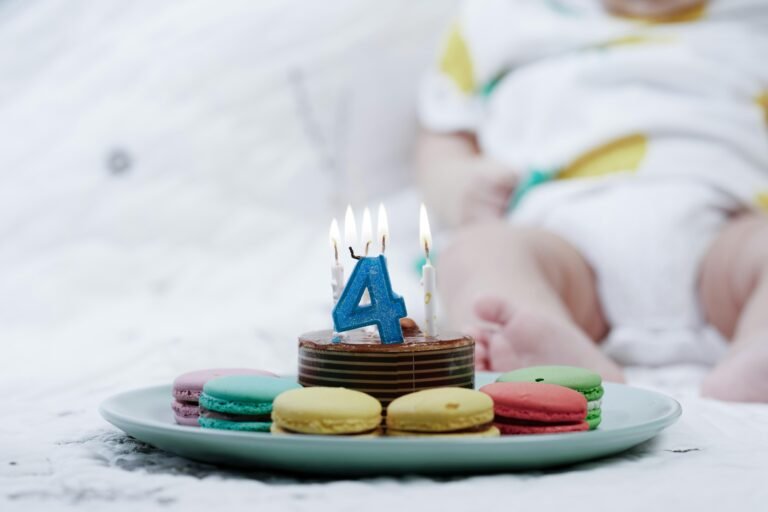Welcoming a new baby into your life is one of the most exciting and heartwarming experiences imaginable. As you embark on this incredible journey together, you’ll watch your little one grow and change in amazing ways. From those first tiny smiles to wobbly first steps, every milestone is a wonderful reminder of how quickly time flies—and how much your baby is learning along the way. In this blog, we’ll walk you through the key milestones to expect in your baby’s first year, helping you celebrate each precious moment and feel confident in your parenting adventure. So, grab a cup of coffee, get comfy, and let’s dive into the beautiful world of baby milestones!
Table of Contents
- Understanding Your Baby’s Physical Growth and Motor Skills
- Language Development and Communication Cues to Watch For
- Emotional Bonding and Social Interaction Tips
- Practical Strategies to Support Healthy Sleep Patterns
- Closing Remarks
Understanding Your Baby’s Physical Growth and Motor Skills
From those first tiny movements to confident strides, your baby’s journey through physical growth and motor development is nothing short of miraculous. In the early months, you might notice reflex actions like grasping fingers or rooting for a nipple. These involuntary responses soon give way to more deliberate actions—lifting their head during tummy time, rolling over, and eventually sitting up with minimal support. It’s important to celebrate these small victories because each milestone represents a building block toward independence.
As your baby grows, their control over their body becomes sharper and more coordinated. Around the middle of the first year, expect to see:
- Improved hand-eye coordination, allowing them to grasp, shake, or pass objects between hands.
- Increased muscle strength, powering movements like crawling or cruising along furniture.
- Developing balance and posture, enabling them to sit confidently and later take tentative steps.
These milestones are incredible signs that your baby’s nervous system and muscles are working together to explore their world more actively.
Language Development and Communication Cues to Watch For
From the very first weeks, your baby begins a silent conversation filled with coos, gurgles, and eye contact. Around 6 to 8 weeks, you might notice your little one starting to respond to your voice and making sounds back, signaling early attempts at interaction. As months go by, babbling becomes more intentional, often including repetitive consonant sounds like “ba-ba” or “da-da.” Keep an eye out for these delightful vocal experiments — they’re not just noises, but the building blocks of language. Also, observe if your baby responds to their name or turns their head toward familiar voices, which are key milestones in auditory processing and social engagement.
Non-verbal cues are just as essential in your baby’s communication toolkit. Look for gestures such as reaching out, waving, or pointing, which typically emerge closer to the 9 to 12 month mark. These actions are your baby’s way of expressing needs and curiosity before words take hold. Sharing smiles, making eye contact, or using facial expressions to convey emotions are equally important cues that reflect your baby’s growing understanding of social exchanges. Remember, every baby develops at their own pace, but these signals offer wonderful insight into how they’re beginning to connect with the world around them.
- Early cooing and babbling (6-8 weeks onwards)
- Recognition of their name and familiar voices
- Responding with smiles and eye contact
- Gestures like reaching and pointing by the 9-12 month stage
- Facial expressions expressing emotions
Emotional Bonding and Social Interaction Tips
Practical Strategies to Support Healthy Sleep Patterns
Establishing a consistent bedtime routine is one of the most effective ways to help your baby develop healthy sleep habits. This can include calming activities like a warm bath, gentle rocking, or reading a favorite story. Keep the environment soothing by dimming the lights and minimizing noise to signal that it’s time to wind down. Babies thrive on predictability, so try to keep sleep and nap times around the same schedule every day. This steady rhythm can ease the transition to sleep and reduce fussiness at bedtime.
Additionally, creating a comfortable and safe sleeping space is essential. Use a firm mattress with a fitted sheet in a crib free from toys, pillows, or blankets that could cause discomfort or pose risks. Maintaining a slightly cool room temperature helps prevent overheating and promotes better rest. You might also consider white noise machines or soft lullabies to mask household sounds. Remember, every baby is unique, so watch your little one’s cues and adjust the routine as needed to support their individual sleep needs.
Closing Remarks
As you watch your little one grow and reach each milestone, remember that every baby follows their own unique timeline. Whether it’s that first smile, a wobbly step, or an adventurous babble, these moments are precious glimpses into your baby’s incredible journey. Trust your instincts, celebrate the big and small victories, and most importantly, savor this special first year together — it truly flies by! Here’s to many joyful memories and milestones ahead. You’ve got this, mama and papa!
Related Products
-
Moroccanoil Mini Must-Haves – Deluxe Sampler Set
Beauty $58.00 -
Sale!
DEARMAY Gold Bracelets for Women Waterproof, 14K R…
Clothing Original price was: $19.99.$2.83Current price is: $2.83. -
Sale!
Allewie Queen Size Platform Bed Frame with Velvet …
Home Original price was: $239.99.$163.99Current price is: $163.99.

